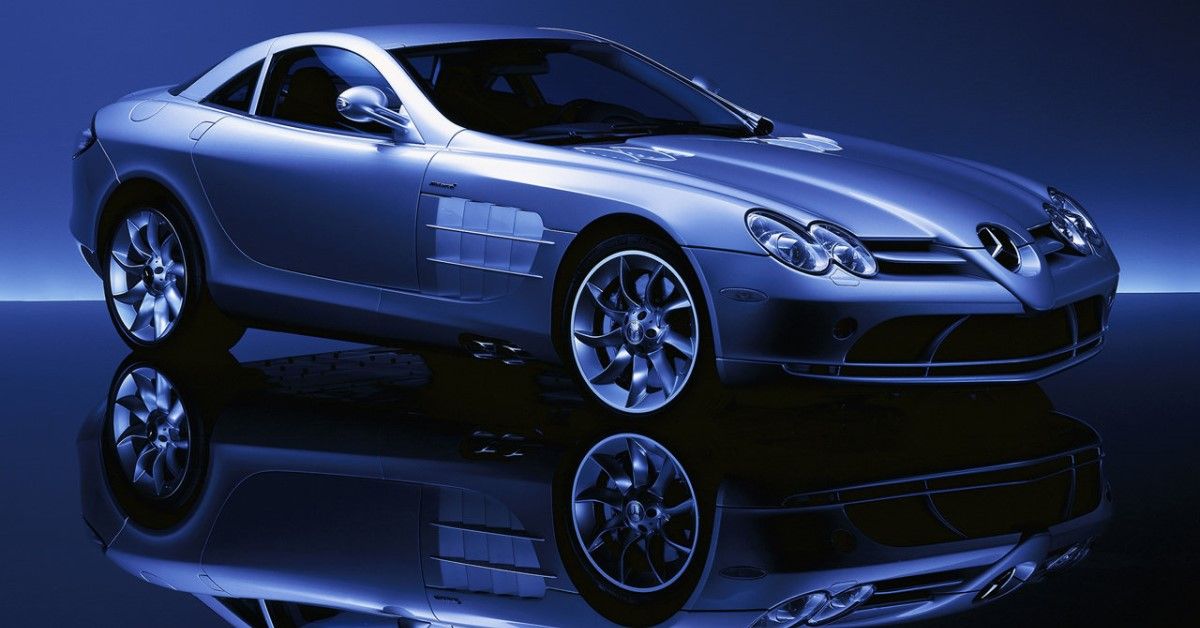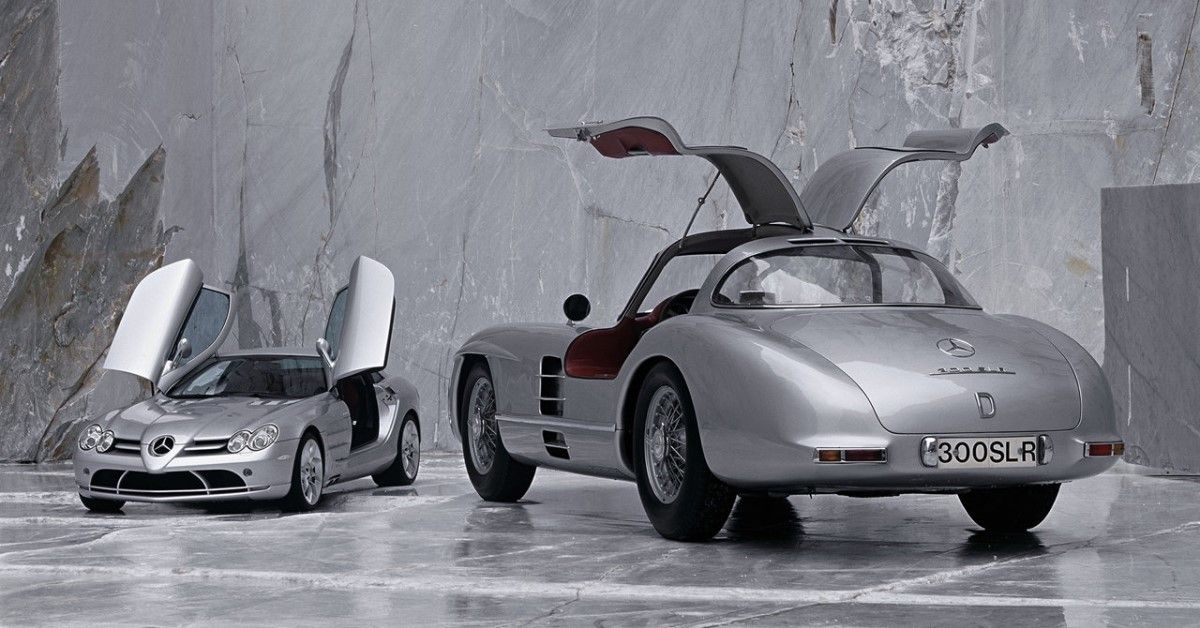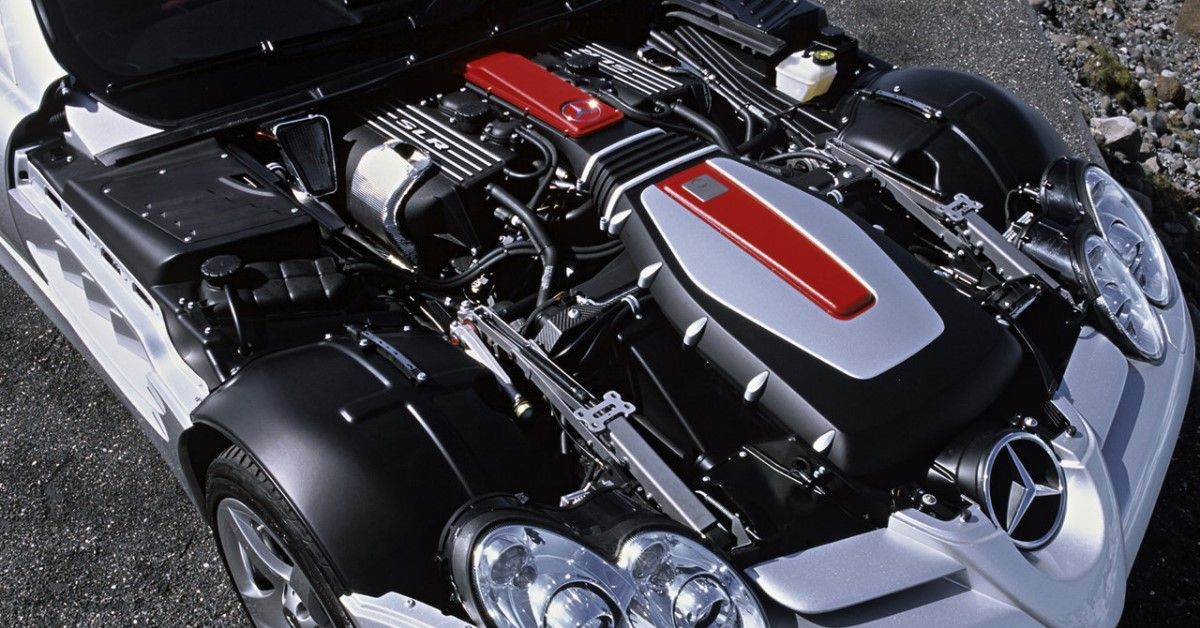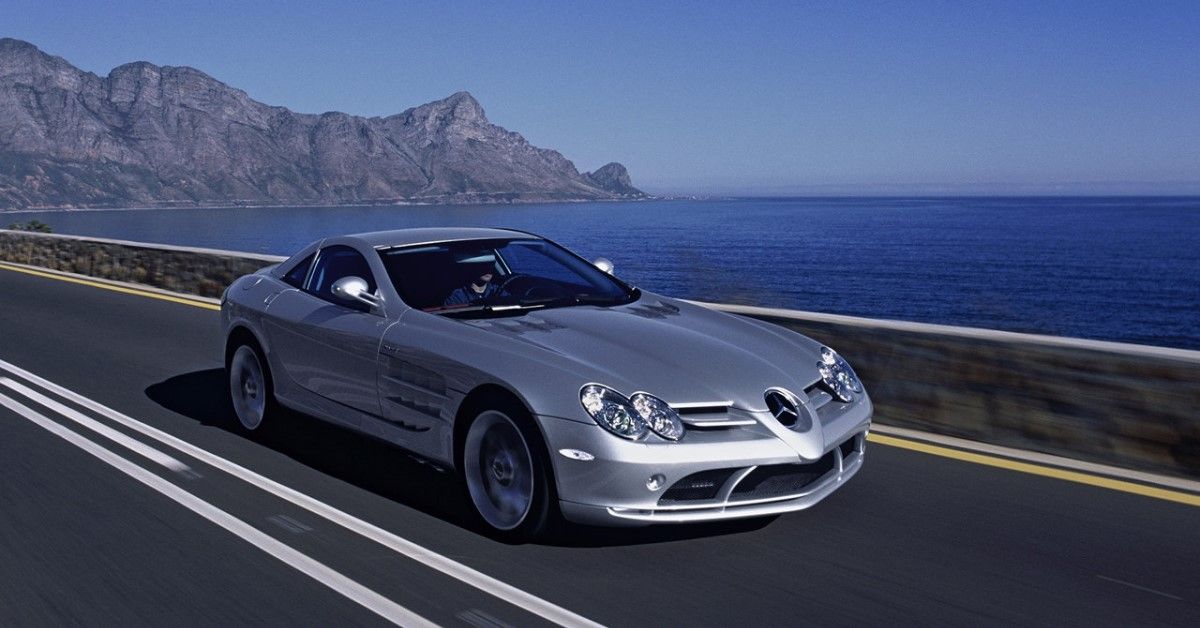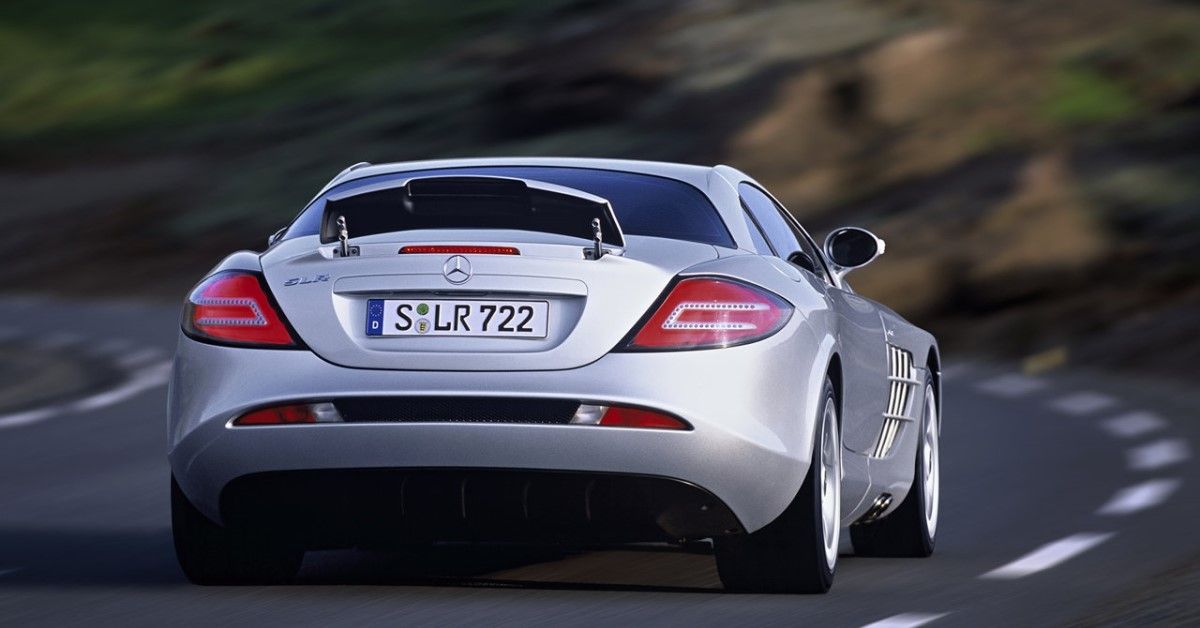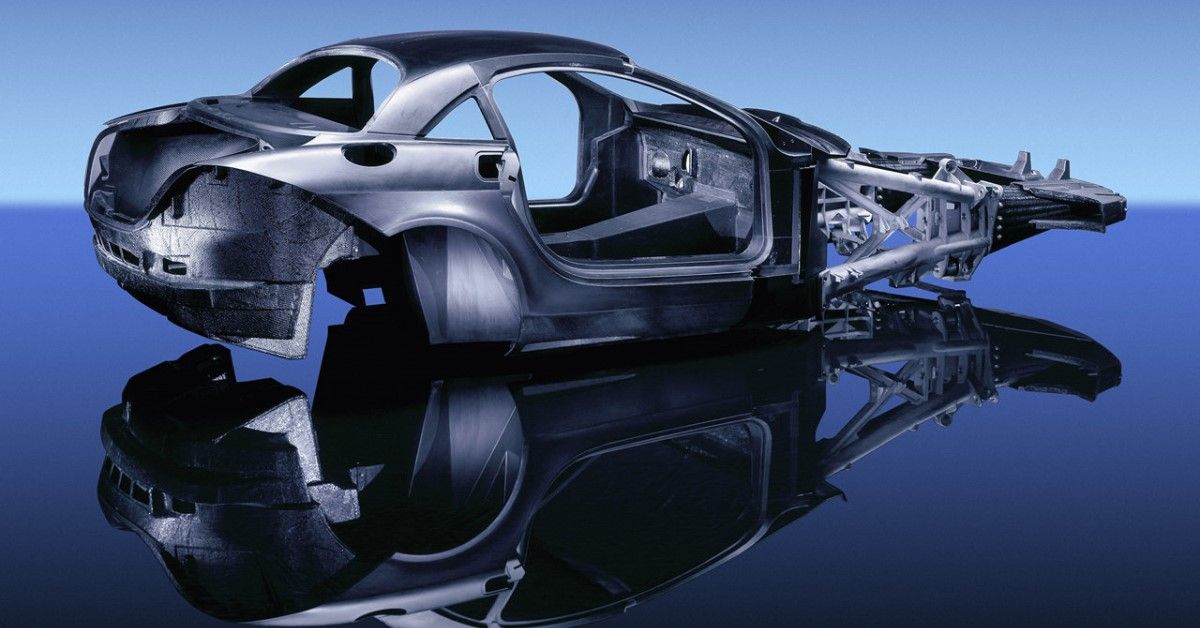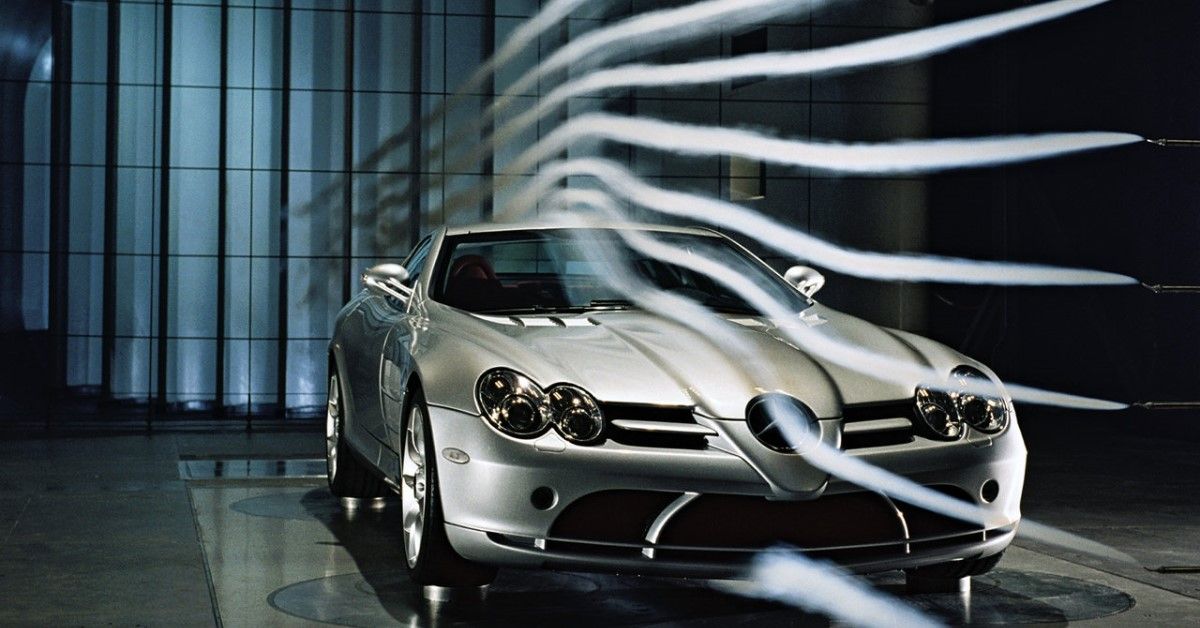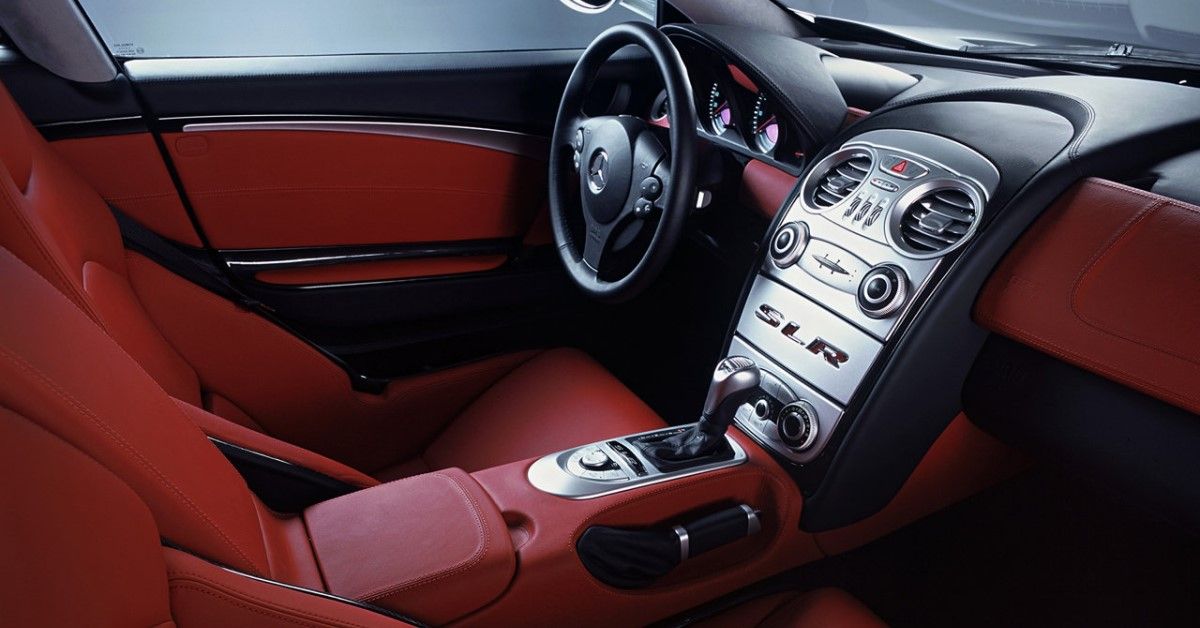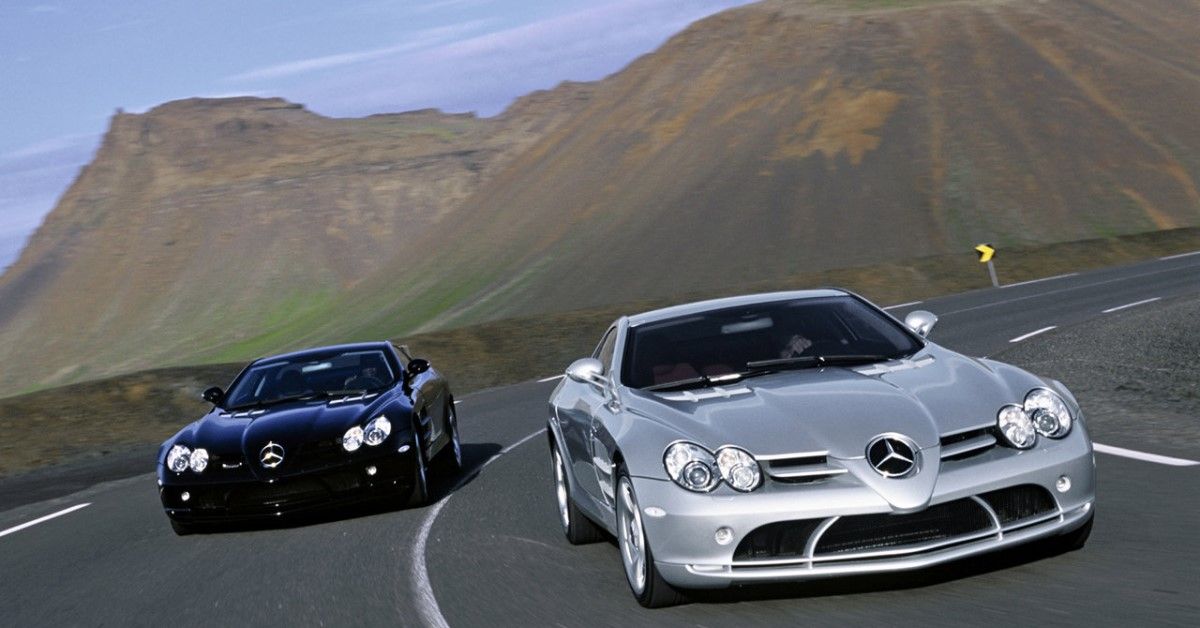The Mercedes-Benz SLR McLaren is one of the most underrated and forgotten supercars of the 21st century. It was born out of the collaboration of McLaren and Mercedes-Benz for Formula 1. While most of the extreme performance machines of the time like the Porsche Carerra GT, Ferrari Enzo, and the poster-worthy Pagani Zonda were focused on providing sheer performance, Mercedes-Benz took the route lesser traveled.
It was a mixed bag with the performance of a supercar and dynamics and interior inclined towards a cozy grand tourer. The SLR was a fusion of old and new and Mercedes-Benz did it quite so smoothly with the help of McLaren. It all started with the Vision SLR Concept at the 1999 North American International Auto Show. Soon after the Mercedes-Benz SLR McLaren went into production and sold over 2,000 units over a span of 7 years (2003- 2010). This iconic supercar has its roots in the 1950s, a time of dead-drop-gorgeous supercars.
Mercedes-Benz SLR McLaren was a performance machine that was inspired by the past and made for the future; was a supercar but also a grand tourer!
SLR McLaren Was Inspired By the Mercedes-Benz 300 SLR
Mercedes-Benz SLR McLaren has a rich history that dates back to the 1950s. This was a flourishing time for Merc in motorsports. And so they developed a lightweight sports coupe for the road based on their track-icon, the Silberpfeilen (Silver arrows) which used to dominate Formula 1.
This was called the 300 SLR, in which SLR stood for Super-Leicht Rennsport which meant 'Super Light Racing'. It was the earliest Mercedes-Benz with gull-wing doors and is pretty much self-explanatory on how Mercedes used it as the template for the SLR McLaren from the image above. And racing legend, Sir Stirling Moss was a moving force as well.
First Car To Pack A In-House Built Supercharged V8 By AMG
Mercedes-Benz SLR McLaren packed the very first in-house developed engine, hand-built by AMG. It was a 332 cu. in. (5.5L) Supercharged V8 that was rated at 617 hp @ 6,500 rpm and 575 lb-ft @ 3,250 rpm. It was too early for DCTs to enter the show and so, the SLR McLaren was equipped with an interesting 5-Speed 'manumatic' transmission.
This allowed drivers to shift with the push of a button. It also packed a dry-sump lubricating system which allowed Merc to position the engine lower, thus dropping its center of gravity. Indigenous engineering for an exceptional machine.
Mercedes-Benz SLR McLaren Did 0-60 Mph In 3.6 Seconds; Was Still Daily-Drivable
The Mercedes-Benz SLR McLaren did 0-60 mph in a blistering 3.6 seconds which was easily the upper end of the supercar spectrum during the early 2000s. It had a top speed of 208 mph which put it right on top of the 'supercars to beat' radar. But these numbers weren't that intimidating as compared to its equal counterparts, and was surprisingly an easy car to drive around.
Mercedes-Benz equipped the SLR with an independent suspension setup that used clever engineering to cater to the oddly long front end and provide for a grippy driving experience. It had an anti-roll bar at the front for added stability. Specially designed Michelin Pilot Sport PS2 tires wrapped around those sick looking 19-inch turbine wheels. kept this futuristic machine at bay.
First Production Car To Have A Carbon Fiber Monocoque Chassis And Ceramic Brakes
Mercedes-Benz and McLaren seeped in their Formula 1 pedigree into all aspects of the SLR. It was the first production car to be built around a carbon-fiber monocoque chassis. Even the front crumple zone was built out of carbon fiber. It is only the rear sub-frame that is made from aluminum. All of this helped the SLR to have a curb weight of just 3,868 lbs. (1,750 kg).
It also packed special ceramic brakes (first time also, on a production car), that provided up to 1.3Gs of stopping power. This helped the SLR Mclaren to stop from 70 mph in just 161 ft. Aerodynamics was also given ample importance and it packed an active aero wing that would raise to a 65-degree angle to provide additional downforce under hard braking and aggressive driving.
Mercedes-Benz SLR McLaren Was A 208 Mph Supercar With A Plush Interior
This is where Mercedes-Benz comes in. The fusion of two varying automakers with a different mindset is the root cause of the SLR McLaren being a very special car. This car could make you scream while blasting on the tarmac with a top speed of over 200 mph.
But it came with a plush leather-wrapped interior that was the exact opposite of what its performance conveyed. It had power windows, power seats, and power locks. Air-con was standard and came with a 7-speaker Bose audio system, also a navigation system. Yes, all of these in a blisteringly fast car, built for the one purpose - Speed!
So, Why Isn't The SLR McLaren Getting The Attention It Deserves?
Its greatest boon was also the downfall. Mercedes-Benz and McLaren had polar opposite visions of what they wanted from this collaboration. While Mercedes wanted a plush and comfortable grand tourer, McLaren was more into a full-on sports car. So this resulted in both the automakers fisting it out even while conceptualizing the SLR McLaren. And so it ended up in between both these ideas.
The SLR McLaren is clearly good at what it does, but the car lacked purpose and didn't have a clear message for its target consumers, thus eventually being forgotten. But it did manage to sell over 2,000 units before ending the partnership. Its in-between character is a huge highlight of what the best of both worlds looks like. It sure was a compromise, but that led it to be a supercar like no other, one that slides between a supercar and a grand tourer.
Sources: Wikipedia.org, Motortrend.com, Automobile.fandom.com, Auto.howstuffworks.com, Motorbiscuit.com, Thedrive.com

